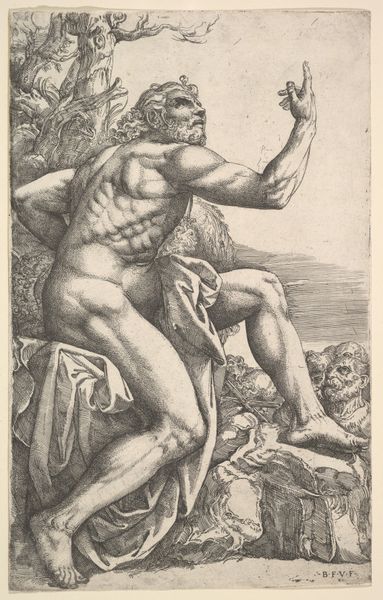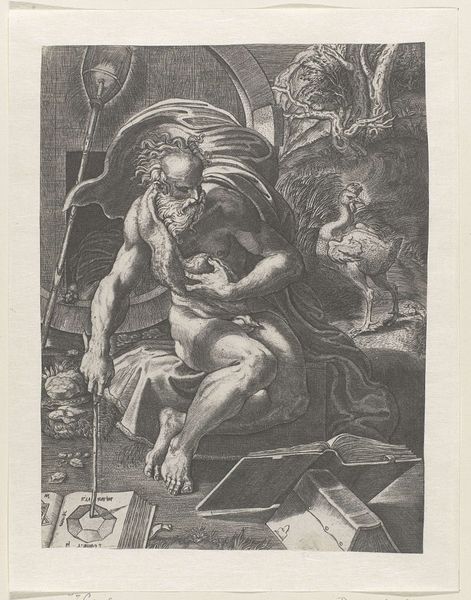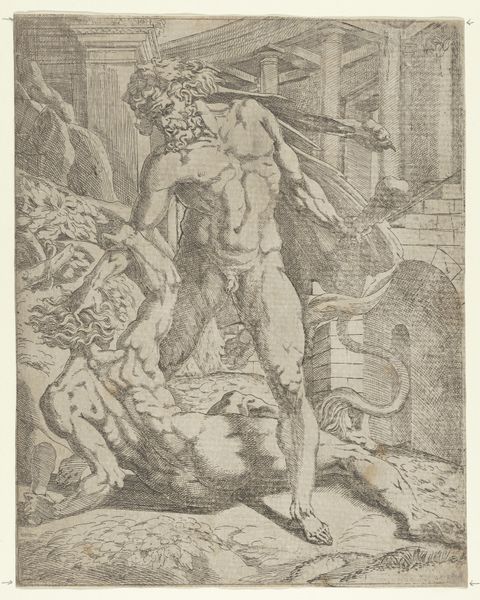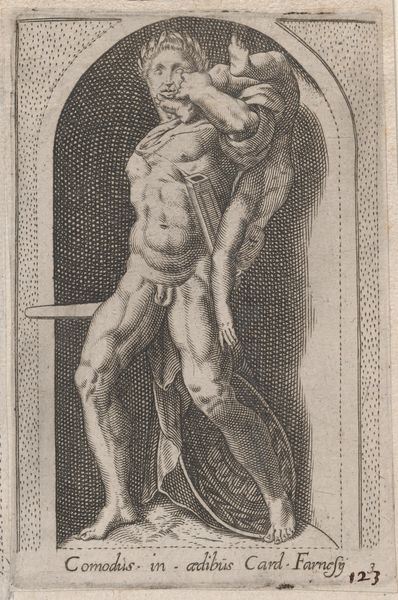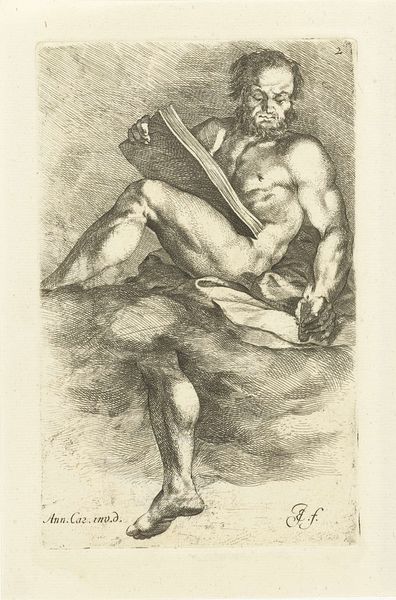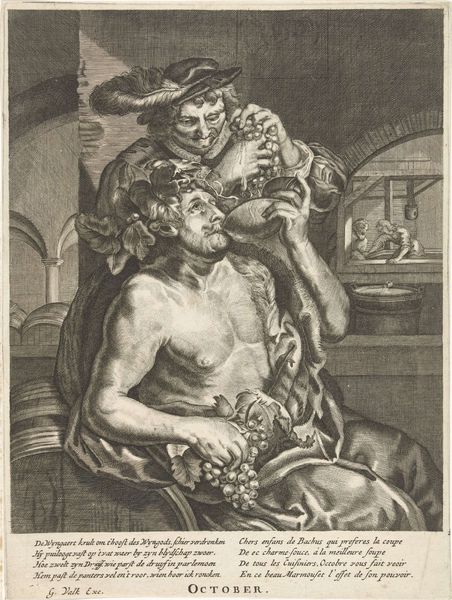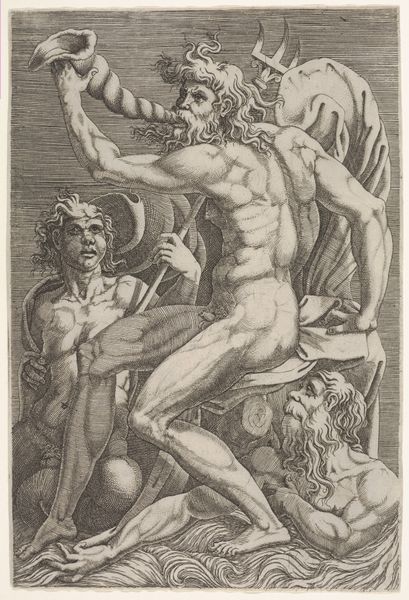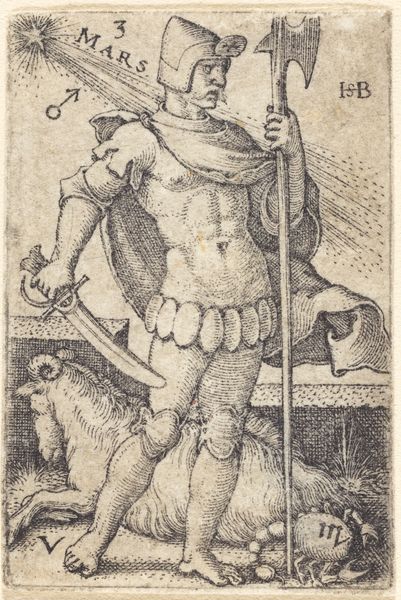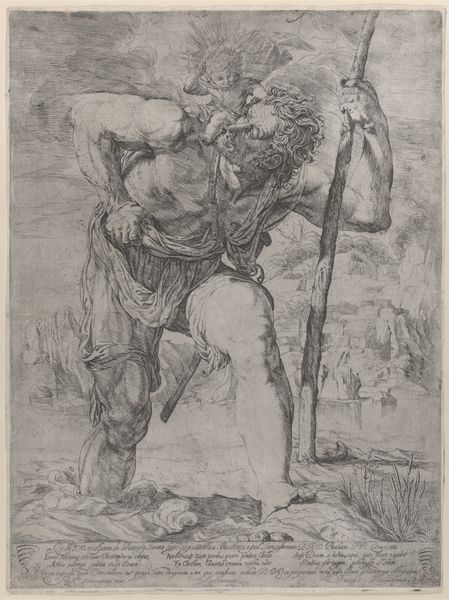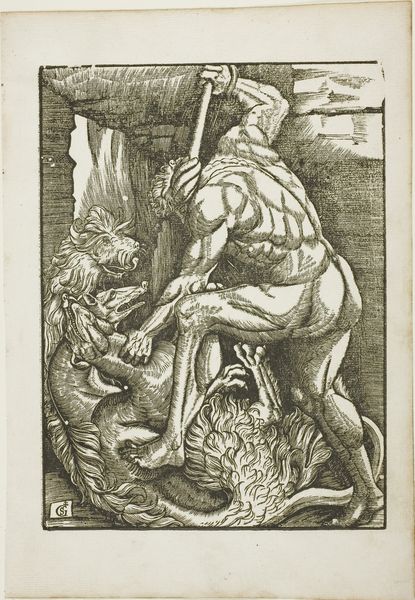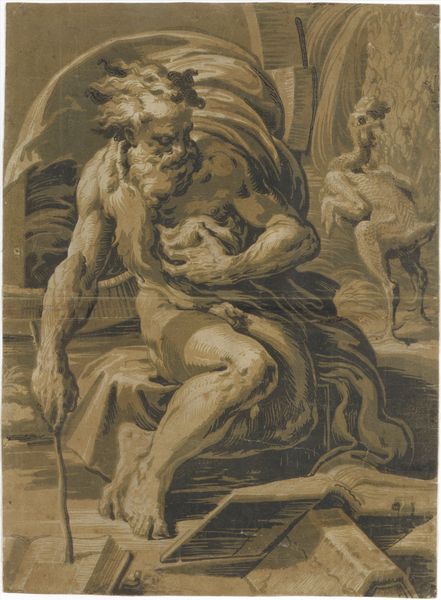
Simeon, from "The Twelve Sons of Jacob" 1584 - 1594
0:00
0:00
Dimensions: Sheet: 6 1/8 × 4 3/16 in. (15.5 × 10.6 cm)
Copyright: Public Domain
Editor: Wow, there's something brooding and intensely melancholic about this image, isn’t there? The shadows, the sheer bulk of the figure… he looks like he’s carrying the weight of the world. Curator: That feeling resonates with the historical and social context surrounding engravings like this. This is "Simeon, from 'The Twelve Sons of Jacob,'" an engraving done between 1584 and 1594, after a design by Hendrik Goltzius, engraved by Jacques de Gheyn II. The series portrays figures from the Old Testament, locating them in a lineage with contemporary political overtones. You can find it at the Metropolitan Museum of Art in New York. Editor: Simeon definitely has that Old Testament vibe—stern, muscular, powerful. And what a sword! The composition, with the darks and lights, gives him almost theatrical presence. It is like he is caught between drama onstage and a personal moment off stage. Curator: Right, the use of chiaroscuro enhances the drama inherent in these biblical narratives. Consider that the history painting, from which this drawing is extracted, held immense social significance at the time, carrying moral and political messages. It invites us to ponder notions of justice, power, and the often-fraught relationships between individuals and community in times of religious conflict and exploration. Editor: Absolutely, you get the sense that de Gheyn wasn't just rendering a biblical figure, but perhaps commenting on leadership or societal expectations of masculinity. Curator: It’s a compelling example of how historical context illuminates a deeper reading. Considering, for instance, how Simeon is positioned both as an individual and part of a larger symbolic construct speaks volumes about the negotiation of identity during that era. Editor: Looking at it now, knowing the layers, I’m getting less melodrama, and more complexity. It becomes a psychological exploration, in the end. Curator: Agreed. By viewing it through the lens of historical and contemporary theory, it sparks a more thoughtful contemplation. The engraving challenges us to actively interrogate what narratives are privileged and whose stories remain untold.
Comments
No comments
Be the first to comment and join the conversation on the ultimate creative platform.
